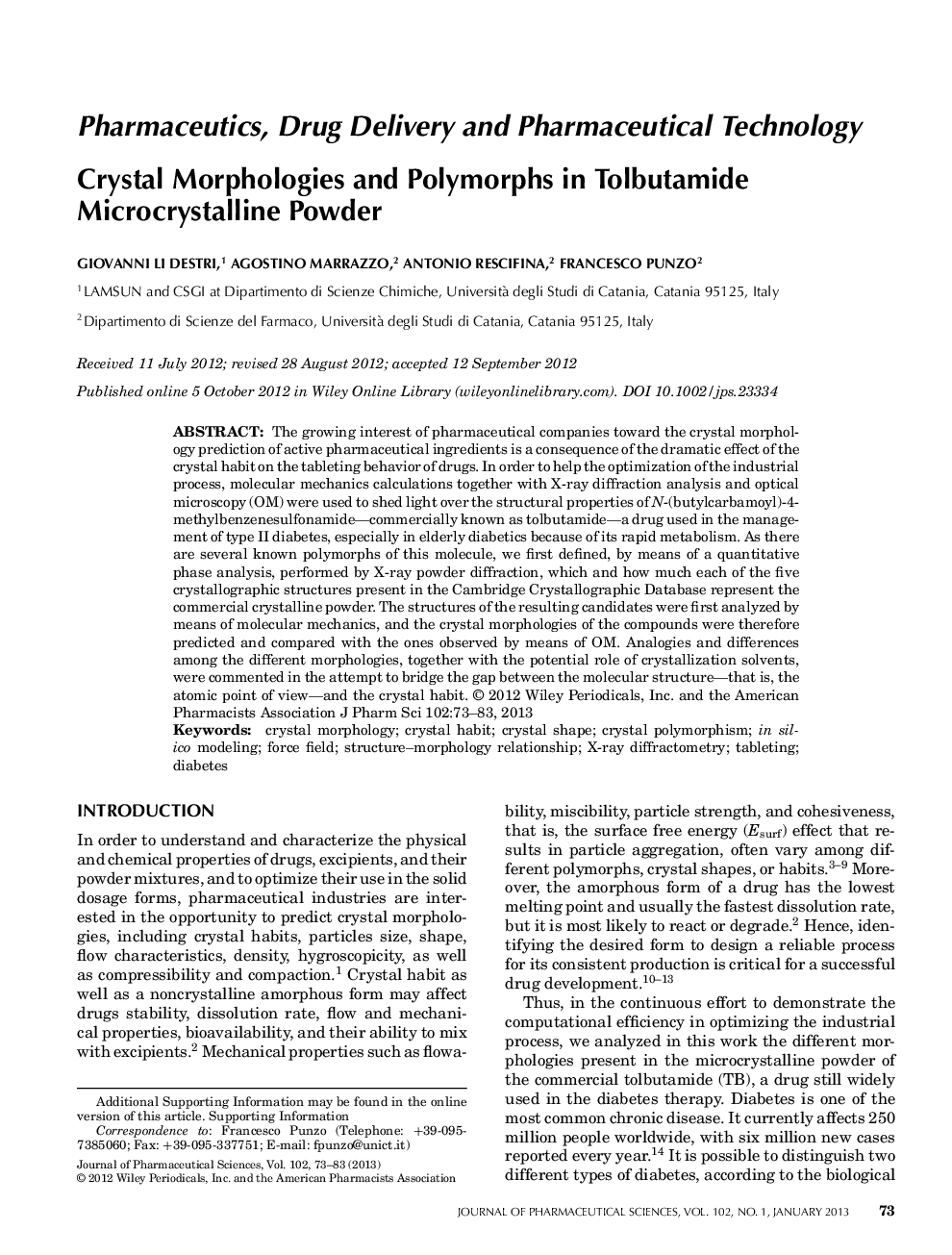| Article ID | Journal | Published Year | Pages | File Type |
|---|---|---|---|---|
| 2485439 | Journal of Pharmaceutical Sciences | 2013 | 11 Pages |
Abstract
The growing interest of pharmaceutical companies toward the crystal morphology prediction of active pharmaceutical ingredients is a consequence of the dramatic effect of the crystal habit on the tableting behavior of drugs. In order to help the optimization of the industrial process, molecular mechanics calculations together with Xâray diffraction analysis and optical microscopy (OM) were used to shed light over the structural properties of Nâ(butylcarbamoyl)â4âmethylbenzenesulfonamide-commercially known as tolbutamide-a drug used in the management of type II diabetes, especially in elderly diabetics because of its rapid metabolism. As there are several known polymorphs of this molecule, we first defined, by means of a quantitative phase analysis, performed by Xâray powder diffraction, which and how much each of the five crystallographic structures present in the Cambridge Crystallographic Database represent the commercial crystalline powder. The structures of the resulting candidates were first analyzed by means of molecular mechanics, and the crystal morphologies of the compounds were therefore predicted and compared with the ones observed by means of OM. Analogies and differences among the different morphologies, together with the potential role of crystallization solvents, were commented in the attempt to bridge the gap between the molecular structure-that is, the atomic point of view-and the crystal habit.
Keywords
Related Topics
Health Sciences
Pharmacology, Toxicology and Pharmaceutical Science
Drug Discovery
Authors
Giovanni Li Destri, Agostino Marrazzo, Antonio Rescifina, Francesco Punzo,
